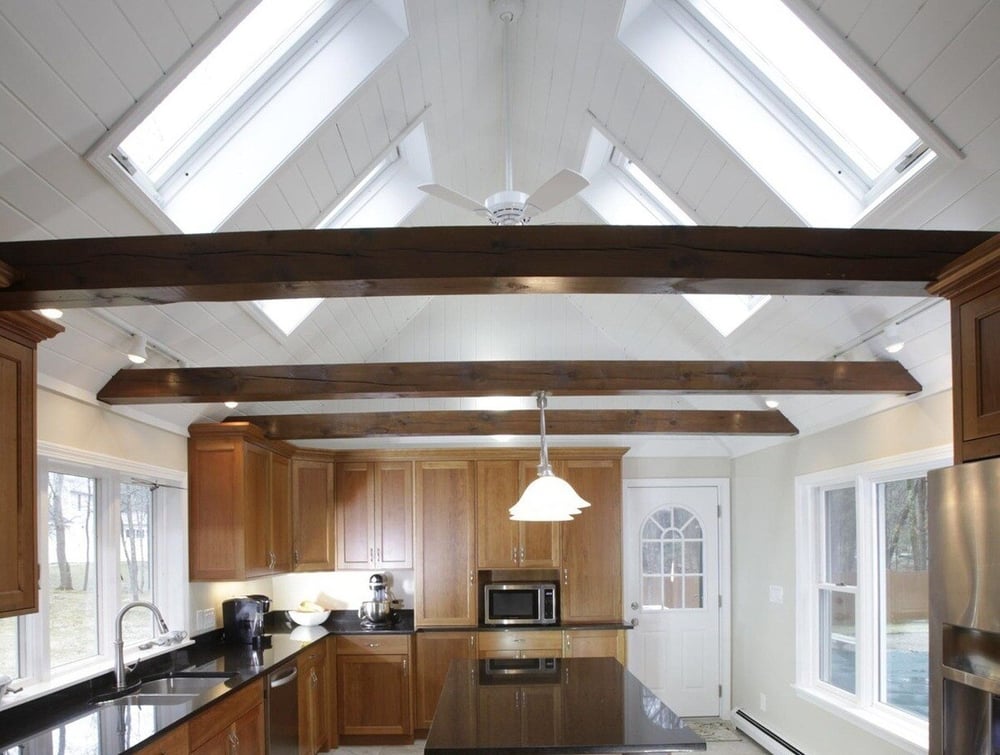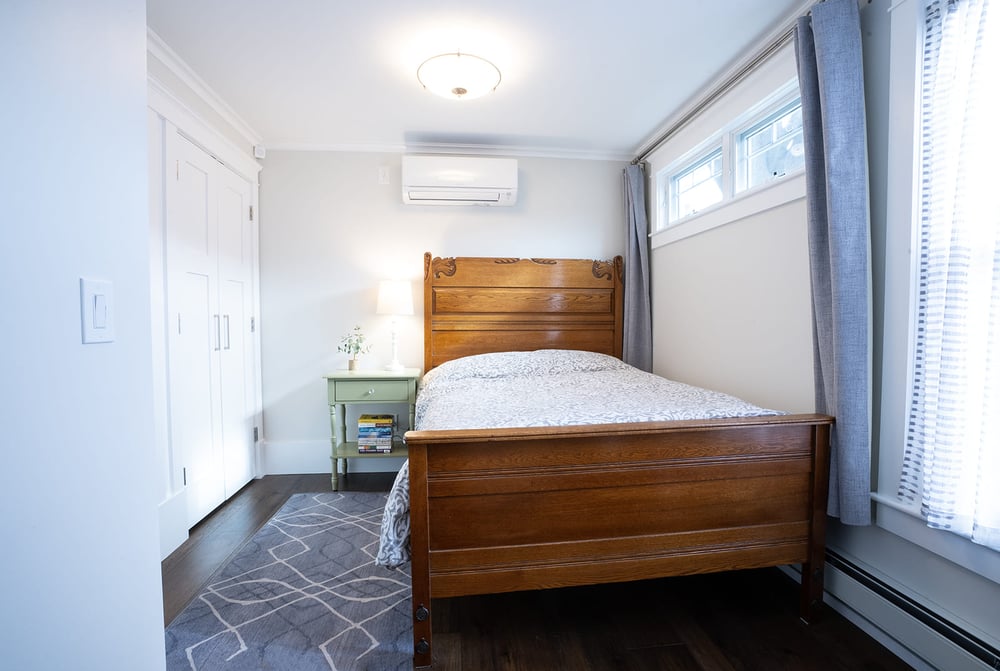4 Min Read
Beyond Passive Houses: Alternative Paths to Energy Efficiency
You want a comfortable home with low energy bills and the peace of mind that you’re doing your part to consume resources thoughtfully. There may be more ways than you may think to achieve a comfortable, eco-friendly home. When building an energy-efficient custom home, many folks think the only option is to aim for passive house certification. While passive houses are indeed a pinnacle of energy efficiency, achieving such high standards isn't the only way to create a comfortable and eco-friendly home, and going to extreme lengths to obtain this certification may be costly with diminishing returns. At Oxland Builders, we believe energy efficiency goes far beyond just selecting good appliances. It encompasses advanced insulation, proper ventilation, and high-performance building materials. In this blog, we’ll explore various strategies to build an energy-efficient custom home without necessarily going all the way to passive house standards and share some insider know-how to help you understand what makes our methods so effective.
Table of Contents
- What Are Passive Houses?
- Advanced Insulation Techniques
- Effective Ventilation Systems
- Choosing The Right Windows
- Your Energy-Efficient Home In Seacoast, New Hampshire
What Are Passive Houses?
The term "passive house" is a voluntary standard for energy efficiency in a building, which reduces the building's carbon footprint. A passive house is designed to be incredibly energy-efficient, maintaining a consistent indoor climate without conventional heating or cooling systems. The principles behind passive houses include.
- Super-Insulation: This involves using insulation with very high R-values to minimize heat transfer through the building envelope.
- Airtight Construction: Ensuring the building is nearly airtight to prevent heat loss and drafts.
- High-Performance Windows: Using windows with low U-values and high solar heat gain coefficients to optimize energy efficiency.
- Mechanical Ventilation with Heat Recovery (MVHR): This system ensures that fresh air continuously moves into the house while recovering heat from exhaust air, thereby maintaining indoor air quality without energy loss.
- Renewable Energy Integration: Passive houses often incorporate renewable energy sources like solar panels, or small wind turbines to generate energy.
Passive houses are incredibly efficient, but achieving this level of performance requires meticulous planning and additional upfront costs. There are plenty of options for homeowners who want to significantly enhance energy efficiency without the rigorous requirements of passive house certification.
Advanced Insulation Techniques
Insulation is one of the most crucial elements in building an energy-efficient home. Proper insulation keeps the heat in during winter and out during summer, reducing the need for heating and cooling and, consequently, lowering energy costs.
High-Performance Insulation
Oxland Builders uses materials with higher R-values in the walls, attics, and floors. The R-value measures the insulation's ability to resist heat flow; the higher the R-value, the better the insulation. For example, a good R-value for exterior walls in the New Hampshire region ranges from R-13 to R-23, while attics might require insulation rated between R-38 and R-60. High-performance insulation ensures your home retains heat more effectively, reducing energy bills and enhancing comfort.
Spray Foam Insulation
Another excellent choice is spray foam insulation, which we often recommend for new construction projects. Spray foam provides a high R-value and acts as an air sealant, filling gaps and preventing drafts. This dual function makes it one of the most efficient insulation types available.

Effective Ventilation Systems
Proper ventilation is key to maintaining indoor air quality and overall energy efficiency in your home. Without effective ventilation, you risk poor air quality, moisture issues, and energy losses.
Energy Recovery Ventilators (ERVs)
ERVs are one of the most effective ways to maintain a balanced indoor environment. These systems exchange stale indoor air with fresh outdoor air while transferring heat and moisture between the incoming and outgoing airflows. This process ensures that your home's temperature and humidity levels remain consistent without wasting energy to heat or cool it. ERVs are particularly beneficial in regions with extreme temperatures.
Proper Duct Sealing and Insulation
Even the best HVAC system can lose efficiency if the ductwork is not properly sealed and insulated. Leaky ducts can result in significant energy loss, causing your heating and cooling systems to work harder than necessary. At Oxland Builders, we meticulously ensure that all ductwork is properly sealed using advanced methods and high-quality materials. This prevents energy loss and improves overall HVAC system efficiency. Proper insulation of ducts also plays a crucial role in maintaining energy efficiency by preventing heat gain or loss as air travels through the ducts.
Choosing the Right Windows
Windows are a critical component of any home’s energy efficiency. The right windows can significantly reduce energy consumption by improving insulation and reducing heat transfer. Here's how we approach window selection to enhance energy efficiency.

High-Performance Windows
At Oxland Builders, we recommend windows specifically designed for energy efficiency. These windows typically feature low-E (low emissivity) coatings that reflect heat while allowing light to pass through. Double or triple glazing further enhances insulation properties by trapping air or inert gas between the panes, reducing heat transfer. These windows keep your home warmer in the winter and cooler in the summer, contributing to lower energy bills.
What Makes a Window Energy Efficient?
Several factors contribute to a window’s energy efficiency. In addition to low-E coatings and multiple glazing, the frame material and design also play a significant role. For instance, vinyl and fiberglass frames offer better insulation than traditional aluminum frames. The spacers between the glass panes, the gas fills, and the overall construction quality are also critical in determining a window's performance.

Building Materials and Techniques
Selecting the right building materials and employing innovative techniques are crucial steps in constructing an energy-efficient home. At Oxland Builders, we emphasize using materials and methods that enhance energy efficiency without compromising on quality or aesthetics. Advanced construction techniques can significantly improve a home's energy efficiency. Techniques such as advanced framing, which reduces thermal bridging, and continuous insulation, which creates an unbroken layer of insulation around the building envelope, are some methods we can use.
Wondering what your home might cost to build? Our complimentary cost guide breaks it down.
Your Energy-Efficient Home in Seacoast, New Hampshire
Building an energy-efficient home involves more than choosing efficient appliances; it requires a holistic approach that includes advanced insulation, effective ventilation, high-performance windows, and innovative building materials and techniques. Oxland Builders is dedicated to constructing homes that meet high energy standards if that is your goal for your custom home in New Hampshire. Our collaborative and clear process and commitment to quality ensure that your custom home will be energy-efficient and tailored to your unique needs.

If you're considering building an energy-efficient home or upgrading your current one, contact Oxland Builders to learn more about our comprehensive approach to energy-efficient custom home building and remodeling. Let us help you create a comfortable, sustainable, and beautiful home that meets your energy efficiency goals.





.jpg?width=352&name=Oxland%20Builders%20Blog%20Template%20(1).jpg)
